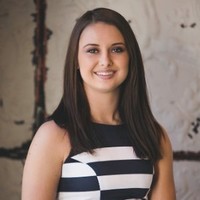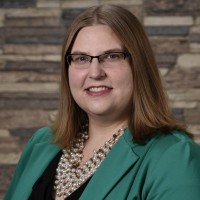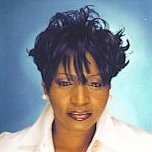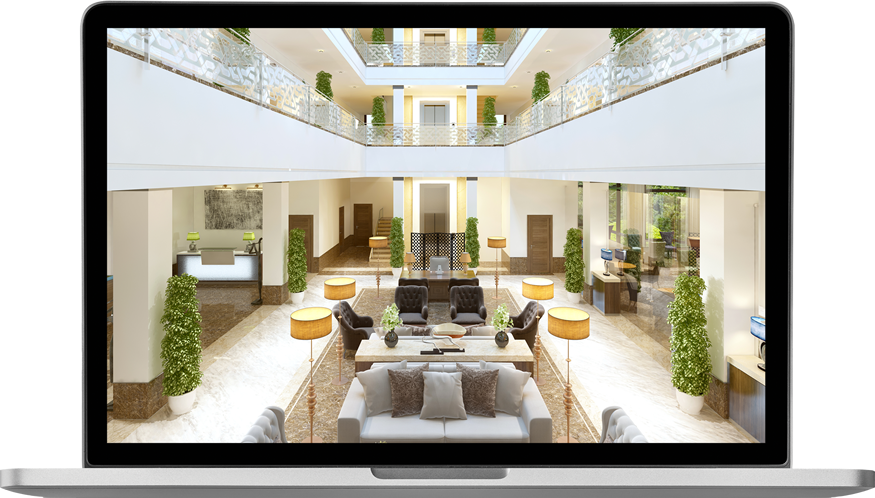A hotel website is a showroom. It creates awareness of a property, provides information about the local area, and, if done right, can bring coveted non-commissionable direct revenue. Online performance has never been more paramount to success in the hospitality industry. Did you know that this success can be boosted with just a few simple design and layout changes? Indeed, there are ways to organize the elements on a hotel website that will catalyze higher conversions, regardless of the property or content provided.
Visually-Appealing Image Buttons
Chances are, your site has a button, often with the label ‘Book Now’ or ‘Check Availability’, that is built into the template and is consistent across all pages. Despite the ease of inserting standard buttons, they are not perfect. Often small and unoriginal, they are easy to overlook. As an example, the below “Check Availability” button is found across all Embassy Suites brand sites:

These buttons stand out from the copy, break up the text, and provide a direct and easy to understand call-to-action; however, the negative space surrounding the button is poorly used and could be more aesthetically appealing. By breaking out of the template and creating custom buttons, more attention can be brought to these buttons and conversion rates can be increased. Like a moth drawn to light, you want visitors’ eyes to naturally lead to this element. For example, the image buttons below are visually engaging by overlaying the text on an enticing image:

To illustrate this point, we can compare behavior between the two Wedding Menu and RFP conversion button designs below. Let’s look under the hood and do a comparison to see the impact.


Layout A: December 10 – January 19
- 107 page visits
- 29 event completions
- 27% of visitors clicked on a menu button
Layout B: January 20-February 29
- 99 page visits
- 36 event completions
- 36% of visitors clicked on a menu button
By swapping these buttons, the event conversion rate on this page increased by 33%, when controlling for differences in traffic.
Easily Digestible Menus
Too often, I see catering menus more than 20 pages long. For a prospective event or wedding planner, this much information in one place is overwhelming and can limit conversion rates. You want relevant information to be found and digested easily, with as little distraction or non-relevant information as possible. A simple way to do this is to break up menus into smaller sections. Let the customer find what they are looking for. Take that long catering menus and break them up into as many of the below categories as possible:
- Breakfast Buffet
- Lunch Buffet
- Dinner Buffet
- Plated Breakfast
- Plated Lunch
- Plated Dinner
- Beer & Wine
- Hors d’oeuvres
- Deli Luncheons
- Reception Packages
- Break Menus
- Continental Breakfast
Now, lay these out separately, like below:

We can do a side by side comparison of the two wedding menu layouts below to see how conversions are impacted:


Layout A: February 19 – March 10
- 232 page visits
- 137 event completions
- 59% of visitors clicked on a menu button
Layout B: March 11-31
- 236 page visits
- 175 event completions
- 74% of visitors clicked on a menu button
It is convenient the page had nearly the same amount of visits during the same time period. It allows us to see in very understandable terms just how much of an impact these buttons had. By simply swapping these elements, the event conversion rate on this page increased by 25%. Or, another way to look at it, 38 more people checked the menus. A side benefit to receiving more relevant clicks, is that implementing tracking allows for evaluation of which menus are most successful.
Accommodations Layout
A hotel website should have a dedicated page for guestrooms. This page is the ultimate showcase of a guest’s experience at the hotel and often their final stop before checking availability/ rates and you want the user’s behavior to reflect this. In essence, it should be one of the highest converting pages on the site. To convert at a high rate, your guestroom page needs to communicate features well without overburdening a user with too much copy. Below are some guidelines to optimizing hotel room pages:
- Most rooms will have similar features and you want to share this information this without redundancy. For instance, if every room on property has a 42’’ TV in it, just list this fact once, instead of next to every room.
- Emphasize images on the page. More than anything, you want to elicit an emotional response evoking a feeling of comfort in the user. This is where great room photography can make a hotel stand out. Ensure images are large and in high-enough resolution for users to easily see.
- Overlay important information on the image. An excellent example of how to use this effectively is with Embassy Suites. A two-bed suite with a pull-out sofa can sleep six comfortably – making it an ideal choice for larger families, sports teams, convention attendees and a wide range of other travelers. Overlaying this information on a room photo illustrates this simply.
Layout A and Layout B represent two different room page designs for the same hotel. Looking at performance, there is a clear winner in terms of driving conversions:


Layout A: March 26 – April 12
- 533 page visits
- 225 event completions
- 42% of visitors clicked on a menu button
Layout B: April 13-30
- 368 page visits
- 224 event completions
- 61% of visitors clicked on a menu button
Despite the significant decrease in traffic to the page (this hotel happens to be strongly affected by seasonality), event completions on the page were nearly consistent. When controlling for the traffic decrease, conversion rate increased by 45% after the redesign. When considering that an event conversion is a step toward a direct reservation, this change has the potential for a significant increase in revenue.
Summary
The above 3 conversion hacks are by no means comprehensive – there are limitless possibilities to influence the web traffic that arrives on a hotel website. Think critically about how guests use a site to book their travel accommodations and draw inspiration from competitor sites to see how their conversion and booking channel is structured. Improving site behavior is catalyzed by having a curious outlook and by continually looking for changes and proactively testing all ideas. You never know which one will be the next great conversion hack! Want more tips and tricks to increase conversions and direct revenue on your site? Reach out to the dedicated hospitality marketing experts at Blue Magnet Interactive!




